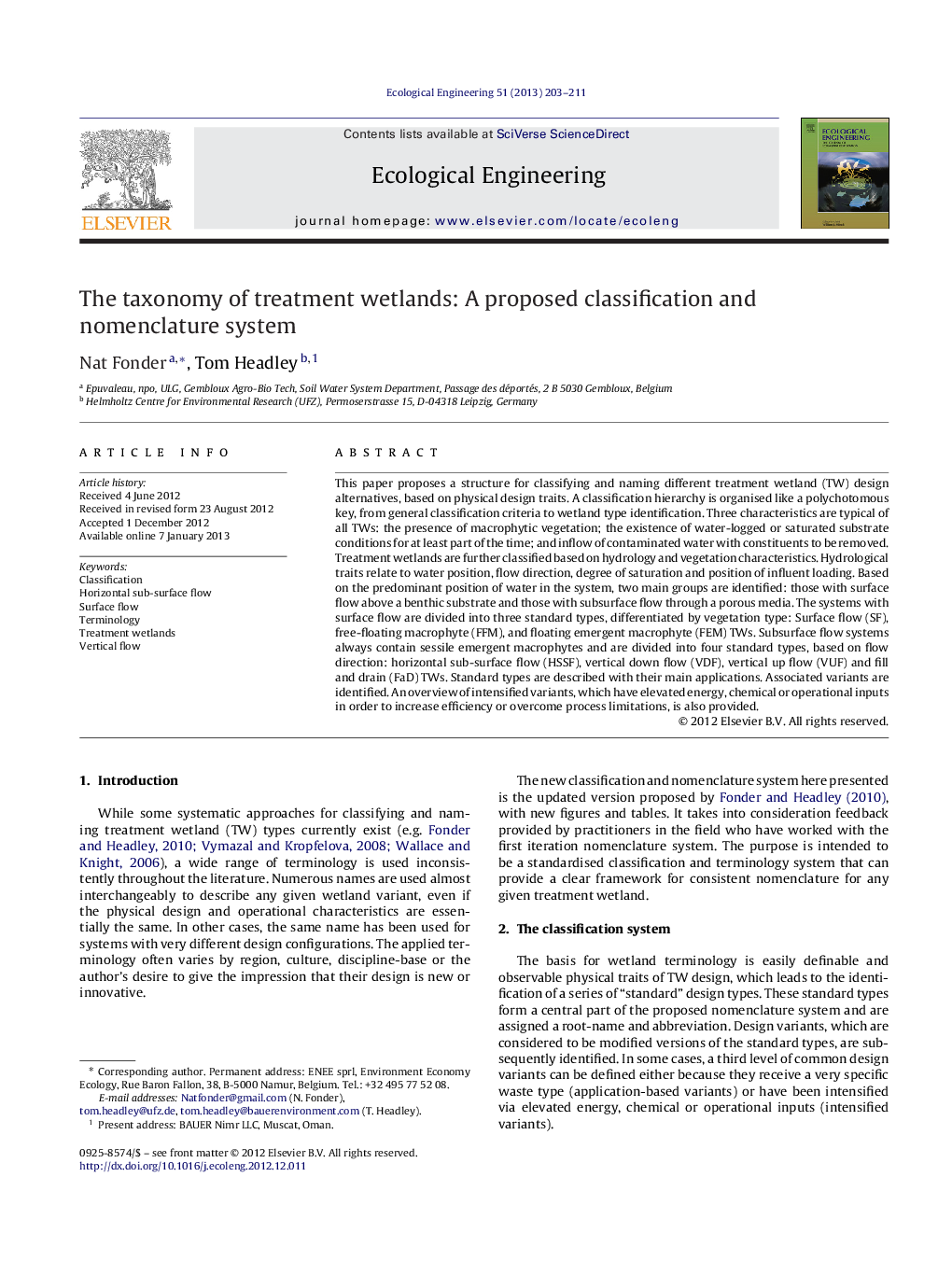| کد مقاله | کد نشریه | سال انتشار | مقاله انگلیسی | نسخه تمام متن |
|---|---|---|---|---|
| 4389845 | 1618047 | 2013 | 9 صفحه PDF | دانلود رایگان |

This paper proposes a structure for classifying and naming different treatment wetland (TW) design alternatives, based on physical design traits. A classification hierarchy is organised like a polychotomous key, from general classification criteria to wetland type identification. Three characteristics are typical of all TWs: the presence of macrophytic vegetation; the existence of water-logged or saturated substrate conditions for at least part of the time; and inflow of contaminated water with constituents to be removed. Treatment wetlands are further classified based on hydrology and vegetation characteristics. Hydrological traits relate to water position, flow direction, degree of saturation and position of influent loading. Based on the predominant position of water in the system, two main groups are identified: those with surface flow above a benthic substrate and those with subsurface flow through a porous media. The systems with surface flow are divided into three standard types, differentiated by vegetation type: Surface flow (SF), free-floating macrophyte (FFM), and floating emergent macrophyte (FEM) TWs. Subsurface flow systems always contain sessile emergent macrophytes and are divided into four standard types, based on flow direction: horizontal sub-surface flow (HSSF), vertical down flow (VDF), vertical up flow (VUF) and fill and drain (FaD) TWs. Standard types are described with their main applications. Associated variants are identified. An overview of intensified variants, which have elevated energy, chemical or operational inputs in order to increase efficiency or overcome process limitations, is also provided.
► We propose a structure for classifying and naming different treatment wetland design alternatives.
► The classification is based on physical design traits, which are hydrology and vegetation characteristics.
► The classification is organised as a polychotomous key, from general classification criteria to wetland type identification.
► The methodology for deriving terminology is based on antonyms to be clear, efficient; and eliminate redundant.
► Seven standard types are identified and described, as well as their main applications, associated and intensified variants.
Journal: Ecological Engineering - Volume 51, February 2013, Pages 203–211